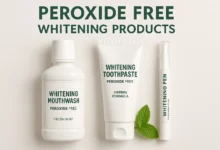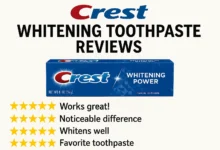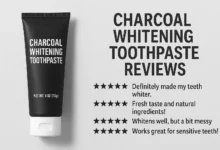Whitening Toothpaste Before After: Transform Your Smile in Days
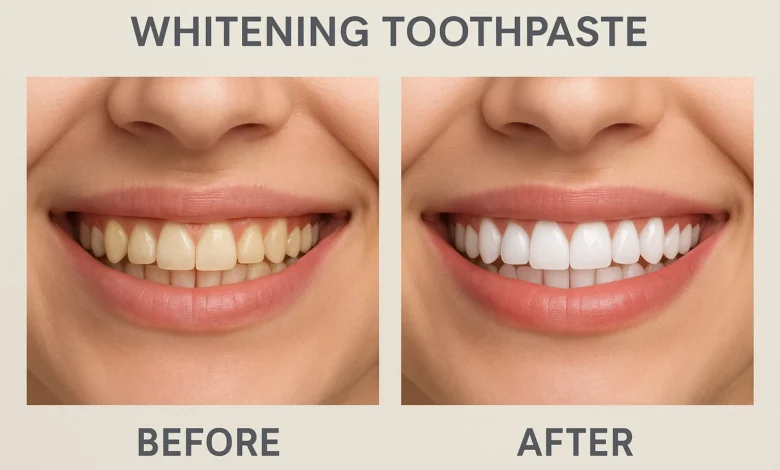
Whitening Toothpaste Before After: Setting Realistic Expectations for 2025
When you scroll through one of the whitening toothpaste before and after pictures, you are met with a make over worthy of hollywood. What you miss though, are the ideal lights, possible filters, or the fact that after was right after a professional cleaning of the teeth.
And, you may be wondering, why your before after tooth whitening outcome is not as good as the ones shown in the ads? You are not alone. This is a conclusive 2025 roadmap that will put marketing hype against clinical reality. You will understand the science of how the whitening toothpastes work, view the real before and after schedules, and the tested methods to get the best results out of it so that you are investing in a product that you will truly get the value on your smile.
The Two Mechanisms of the Whitening Toothpaste.
Before you get to know your potential whitening toothpaste results before and after, you need to know that the term whitening is a general term. The modes of action of these tooth pastes are mainly two and in some cases they can be both.
1. Abrasive Action: The Physical Scrub
Most whitening toothpastes include weak forms of abrasive such as hydrated silica or calcium carbonates. Imagine that this is a very fine, soft polishing compound. They operate by scrubbing away extrinsic stains–the discoloration of the surface caused by coffee, tea, red wine, and tobacco.
- Comparison: It is as though you were scrubbing a dirty coffee cup with a soft scrubber. It just cleans the dirt off the surface but does not alter the color of the havestone.
- Result: Here the natural underlying color of the tooth is brought out through the layer of stain on the tooth being removed. It leaves teeth looking whiter and cleaner, although not necessarily several shades.
2. Chemical Whitening: The Bleaching Action
More advanced formulas contain low concentrations of chemical agents, most commonly:
- Hydrogen Peroxide: The professional bleaching solution that is the gold standard. Toothpaste concentrations are minimal (usually 1 percent or less) because of safety regulations regarding daily use.
- Carbamide Peroxide: Dissociates to form hydrogen peroxide and urea resulting in a slower, extended release.
- Blue Covarine: Optical brightener which is not bleaching. This color is placed on the surface of the teeth and generates a visual illusion by cancelling the yellow tones, which immediately turn the teeth white. The action is short-lived, and dissolves with saliva.
Pro Tip: Check the active ingredients. A toothpaste with hydrogen peroxide or carbamide peroxide is a true “bleaching” toothpaste. One that relies solely on abrasives and Blue Covarine is a “stain-removing” or “whitening-appearance” toothpaste. This distinction is the key to setting your before after whitening toothpaste expectations.
Realistic Whitening Toothpaste Before and After Timelines
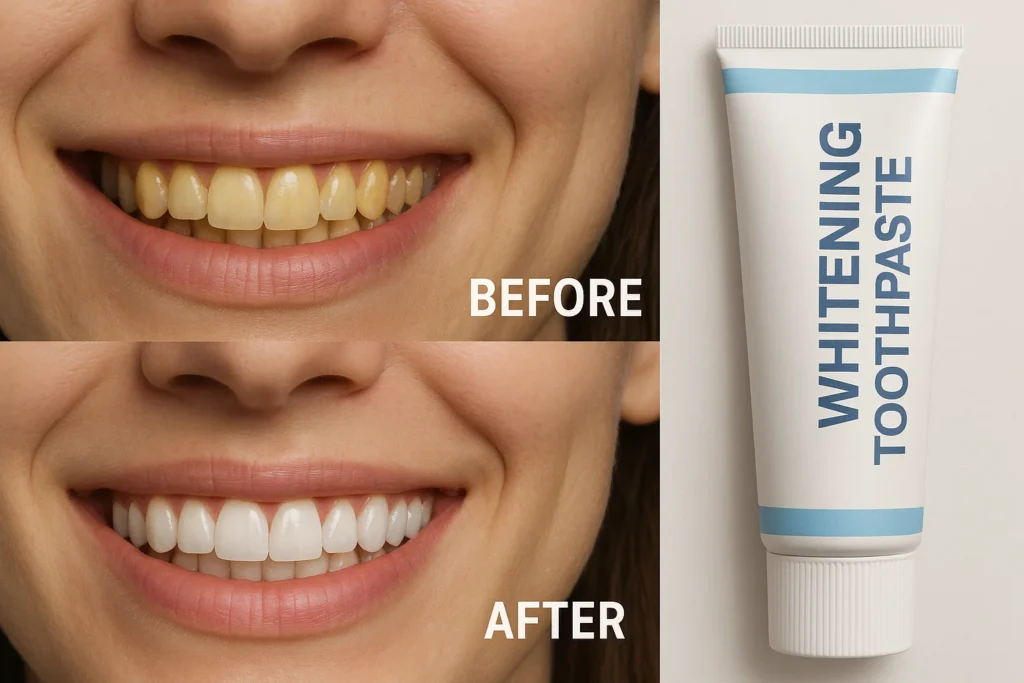
It is all about expectations management. Whitening toothpaste is not an instant process as it is of a professional treatment that takes 1 hour. The following is a realistic schedule, when clinical trials of regular use twice a day are performed.
Week 1-2: The “Clean” Feeling
You will find that your teeth will feel extremely smooth and clean without doubt as surface pellicle (thin protein layer) and new stains are polished off. The difference in color is slight but the surface looks significantly smoother. Blue Covarine toothpastes can achieve a short-lived, but quick cool, blue-coloured effect.
Weeks 3-4: Measurable Improvement.
This is where the majority of the people perceive a physical difference. The extrinsic stains are always washed off making the true color of the teeth to be seen better. When you are on the peroxide tooth-paste the very slight effect of bleaching starts to build up. An average outcome is a one or two shade change on a professional whitening guide.
Weeks 5-8: Peak Effectiveness
That particular toothpaste will have made your teeth as white as they can possibly get. Formulas based on peroxide have produced their full low dose effect, and abrasive formulas have eliminated all removable surface stain. By using the same product further, you will not get much whiter with further usage.
The Plateau Effect: Why “Whitening Toothpaste Doesn’t Work” Anymore
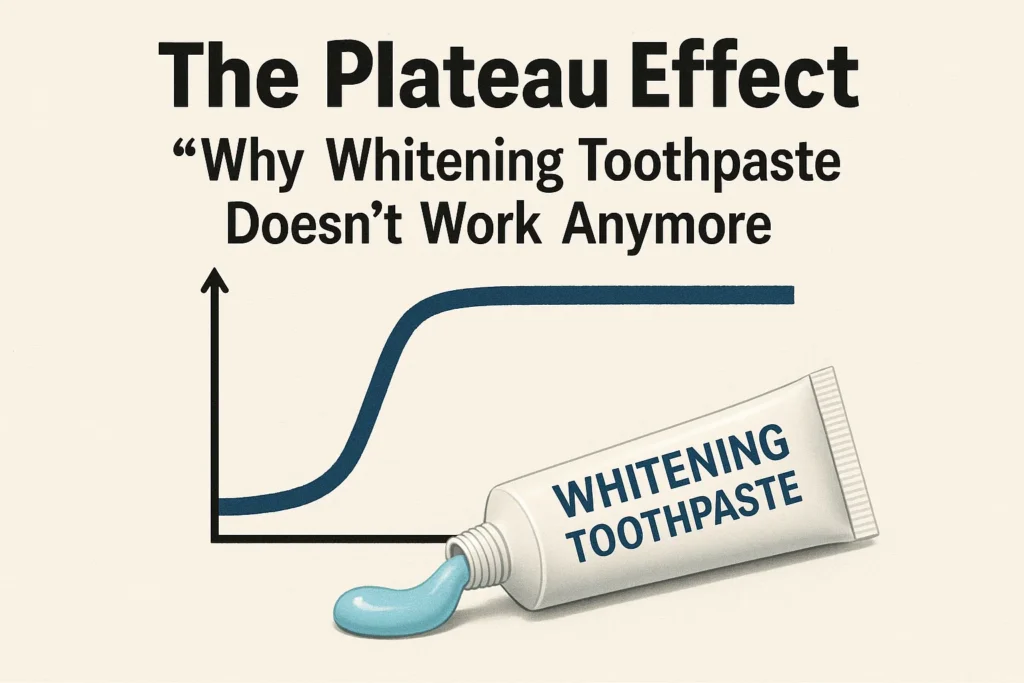
This is a common complaint. After your surface stains have been removed, and a toothpaste has its mild bleaching effect, it can never do anything more. It is incapable of lightening your teeth over their natural underlying dentin color. Professional treatment of higher concentration would be required to do so.
How to Use Whitening Toothpaste Effectively: A 5-Step Guide
Your technique dramatically impacts your teeth whitening toothpaste before and after outcome. Follow this dentist-approved method.
- Apply on a Soft-Bristled Brush: When applying a whitening toothpaste, it is best to use a soft or medium brush and not a hard one because the two may be excessively abrasive and damage the enamel.
- Brush a Full Two Minutes: This is to guarantee that all the tooth surfaces are in contact with the active ingredients to be effective.
- Don’t Rinse Right Now (The most important step!): Is it necessary to rinse out with whitening toothpaste? For maximum effect, no. Brush, spit but do not rinse out with water. This leaves a microscopic layer of the active ingredients (such as peroxide) on your teeth to keep on working.
- Do not stain Foods/Drinks after Brushing: Your enamel will be a little more porous after brushing. You should not brush your teeth within 30 minutes of having a cup of coffee, tea, or red wine.
- Be Consistent: Dedicated use of 2x a day over several weeks is only yielding results.
Best Sonic Toothbrush Reviews 2025 – Which One Should You Buy?
What to Look For: Ingredients and Certifications
Not all whitening toothpastes are created equal. To ensure safety and efficacy, look for these markers on the box.
| Feature to Look For | Why It Matters | Example Brands |
|---|---|---|
| ADA Seal of Acceptance | Verifies the product is safe and effective for removing surface stains. The ADA confirms the Relative Dentin Abrasivity (RDA) is within safe limits. | Crest 3D White, Colgate Optic White Pro Series |
| Fluoride | Non-negotiable. Whitening can cause temporary sensitivity. Fluoride helps remineralize enamel and protect against cavities and sensitivity. | Virtually all major, reputable brands. |
| Potassium Nitrate or Stannous Fluoride | Active ingredients that help block pain signals from the tooth nerve, making them ideal for those with sensitivity. | Sensodyne Extra Whitening, Colgate Sensitive Whitening |
| Hydrogen Peroxide (listed as an active ingredient) | Indicates a true bleaching action, not just abrasive stain removal. | Colgate Optic White Renewal, some Crest 3D White variants |
Whitening Toothpaste After Professional Treatments and Braces
Using whitening toothpaste at specific times requires a tailored approach.
What Toothpaste to Use After Teeth Whitening?
Your enamel is more porous and sensitive temporarily after a professional bleaching treatment. It is not to be aggressive, but to maintain. Apply 1-2 weeks of non-abrasive toothpaste containing a lot of fluoride to sensitive teeth after whitening. You can also re-apply your whitening toothpaste afterwards to keep the results.
After Braces Toothpaste Whitener.
Upon the removal of the braces, there is a lot of visible staining around the bracket locations. Whitening toothpaste is a great product that can be used to balance out the color by eliminating these surface stains. You can use it immediately after your dentist clears you, and this is usually always.
Case Study: The Real “Colgate Whitening Toothpaste Before and After”
A patient uses Colgate Optic White Renewal (with 1% hydrogen peroxide) for 4 weeks. Their before after teeth whitening photos show a clear improvement from an A3 shade to an A2 shade—a realistic one-shade improvement. The teeth are noticeably brighter and stain-free, but they haven’t magically jumped to a B1 “paper white.” This is a typical, successful outcome.
Frequently Asked Questions (FAQ)
How long does it take to see results from whitening toothpaste?
A significant improvement is felt by most individuals within 2-3 weeks, and full results are seen after 4-8 weeks of regular, twice daily use. The whitener feel is usually caused by the very clean and polished surface.
Does enamel get harmed by whitening toothpaste?
The whitening toothpastes that have been approved by ADA are enamel-safe. Non-ADA accepted products, however, particularly the highly abrasive ones or powders made of charcoal are degrading in case of prolonged use. Always look for the ADA Seal.
Why are my teeth yellow after using toothpaste whitener?
This is symptomatic of enamel erosion. In case the toothpaste is too rough, it may erode enamel and expose the underlying naturally yellow mantle of the dentin. In the event of this happening, immediately cease taking and then apply a sensitive toothpaste and visit your dentist.
What is the longest time between brushing my teeth and whitening them using strips?
Whitening strips should not be used immediately after brushing, at least wait 30 minutes. Brushing may temporarily irritate the gums and the peroxide used in the strips can be stinging. The strips are also more likely to stick to a clean and dry tooth surface.
Do dentists recommend the use of whitening toothpastes?
The dentist-approved toothpaste with the ADA Seal of Acceptance are yes, those toothpaste. Dentists recommend them as a safe and effective method of removing surface stains and keeping up with a bright smile, but are emphatic that they are not a replacement to professional bleaching to make any significant changes to color.
Summary: The Secret to an Enjoyably Whiter Smile.
It is a process of managing expectations to get to the next level which is the learning about whitening toothpaste before after. These are extraordinary in the tasks they are engineered to perform, namely, daily surface stain removal, assistance of professional whitening outcomes, and mild brightening impact using low dose safe active ingredients. They are not a sprint, but a marathon.
This is your biggest lesson: to be dramatic and have many layers of whitening, you will have to be professionally treated. However, to achieve a cleaner, whiter, stain-free version of your natural smile, a regular practice of using a high quality, ADA-Accepted whitening toothpaste is both proven and worth it. Quit measuring your self against cropped images on the Internet and rejoice in the genuine, natural change you are experiencing in the mirror.

